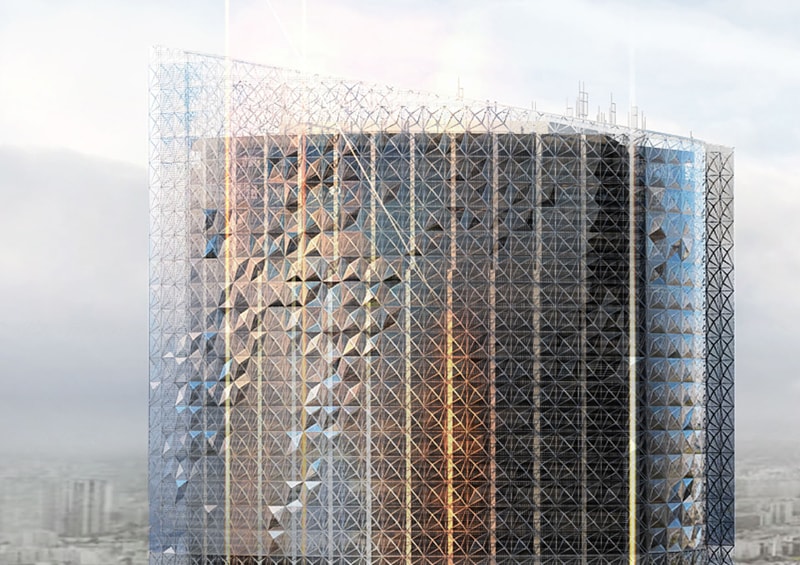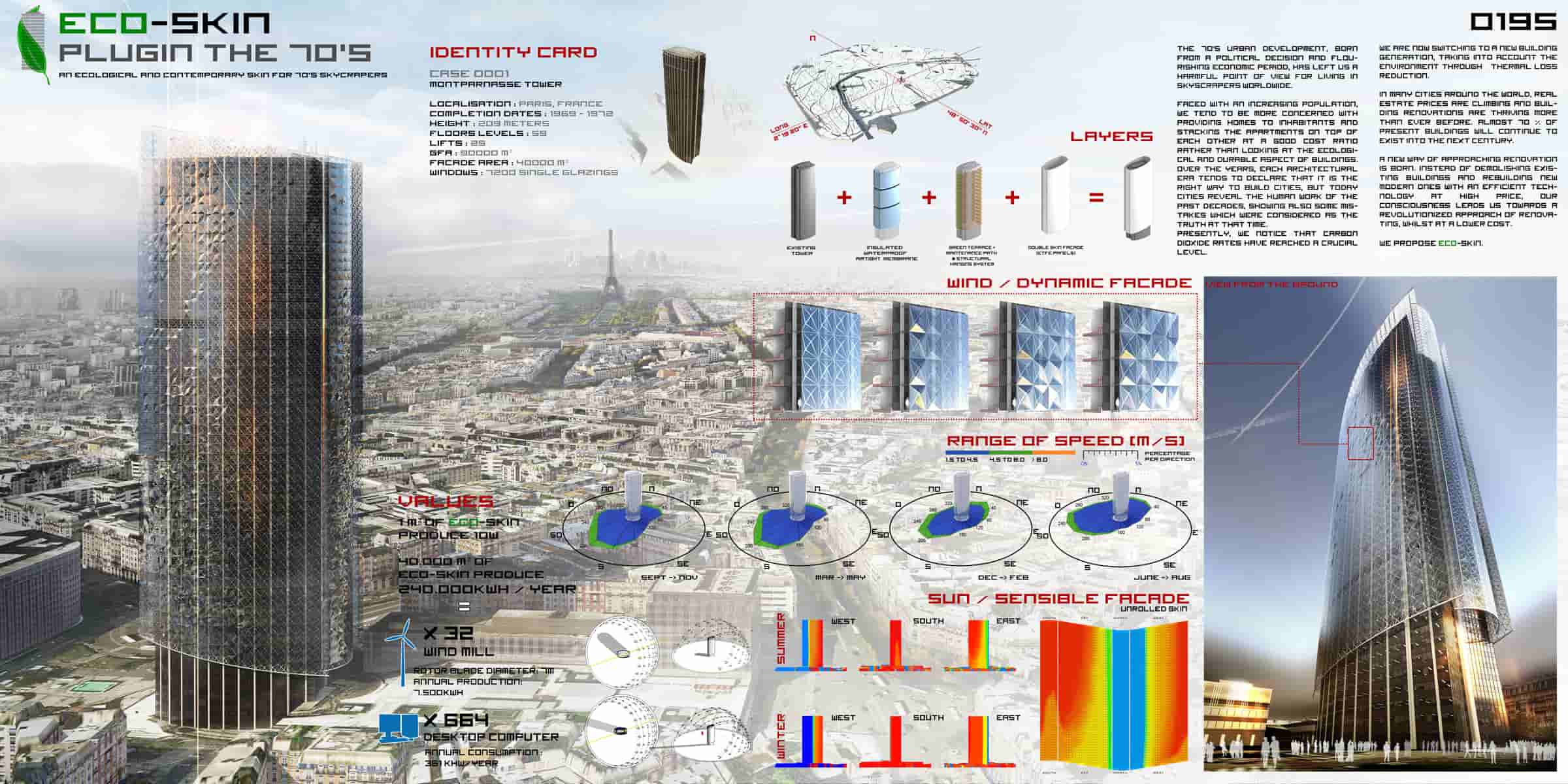Special Mention
2010 Skyscraper Competition
Vincent Barué, Nicolas Boutet, Olivier Brouard
France

The 70’s urban development, born from a political decision and flourishing economic period, has left us a harmful point of view for living in skyscrapers worldwide.
Faced with an increasing population, we tend to be more concerned with providing homes to inhabitants and stacking the apartments on top of each other at a good cost ratio rather than looking at the ecological and durable aspect of buildings. Over the years, each architectural era tends to declare that it is the right way to build cities, but today cities reveal the human work of the past decades, showing also some mistakes which were considered as the truth at that time.
Presently, we notice that Carbon dioxide rates have reached a crucial level. We are now switching to a new building generation, taking into account the environment through thermal loss reduction. In many cities around the world, real estate prices are climbing and building renovations are thriving more than ever before. Almost 70 % of present buildings will continue to exist into the next century.
A new way of approaching renovation is born. Instead of demolishing existing buildings and rebuilding new modern ones with an efficient technology at high price, our consciousness leads us towards a revolutionized approach of renovating, whilst at a lower cost.
How could we redraw the skyline of our cities, bringing a new visual identity and renovating our patrimony legacy?
Eco-Skin
A prefabricated modular panel composed of an aluminum structural frame and an ETFE (Ethylene Tetrafloroethylene) polymer membrane which has a weight of 1% of glass whilst remaining totally transparent. This panel is divided into 6 triangular surfaces of ETFE that react to pressure and compression according to the wind direction and strength.
The membrane stretches to three times its length without loss of elasticity and is self-cleaning due to non-stick surface. Behind a structural frame integrates two pistons which retrieve the mechanical force and convert it into energy.
The modular panel is plugged along the entire building, and forms a waterproof and airtight envelope. It gives a second skin to the building reducing the thermal loss and warming up the building especially during the winter.
As a closed giant membrane, the enclosed air circulates freely between the original façade and the new skin. As an example, we could consider the 70’s buildings as patients in the cities suffering of thermal loss, a substantial electrical consumption, and fairly unattractive.
We took a prototype in Paris, the Montparnasse tower. A 56 floors office tower built in 1971, reaching at 210 meters, located in the 14th district surrounding the whole city.


This work is licensed under a Creative Commons License permitting non-commercial sharing with attribution. https://creativecommons.org/licenses/by-nc-nd/4.0/



